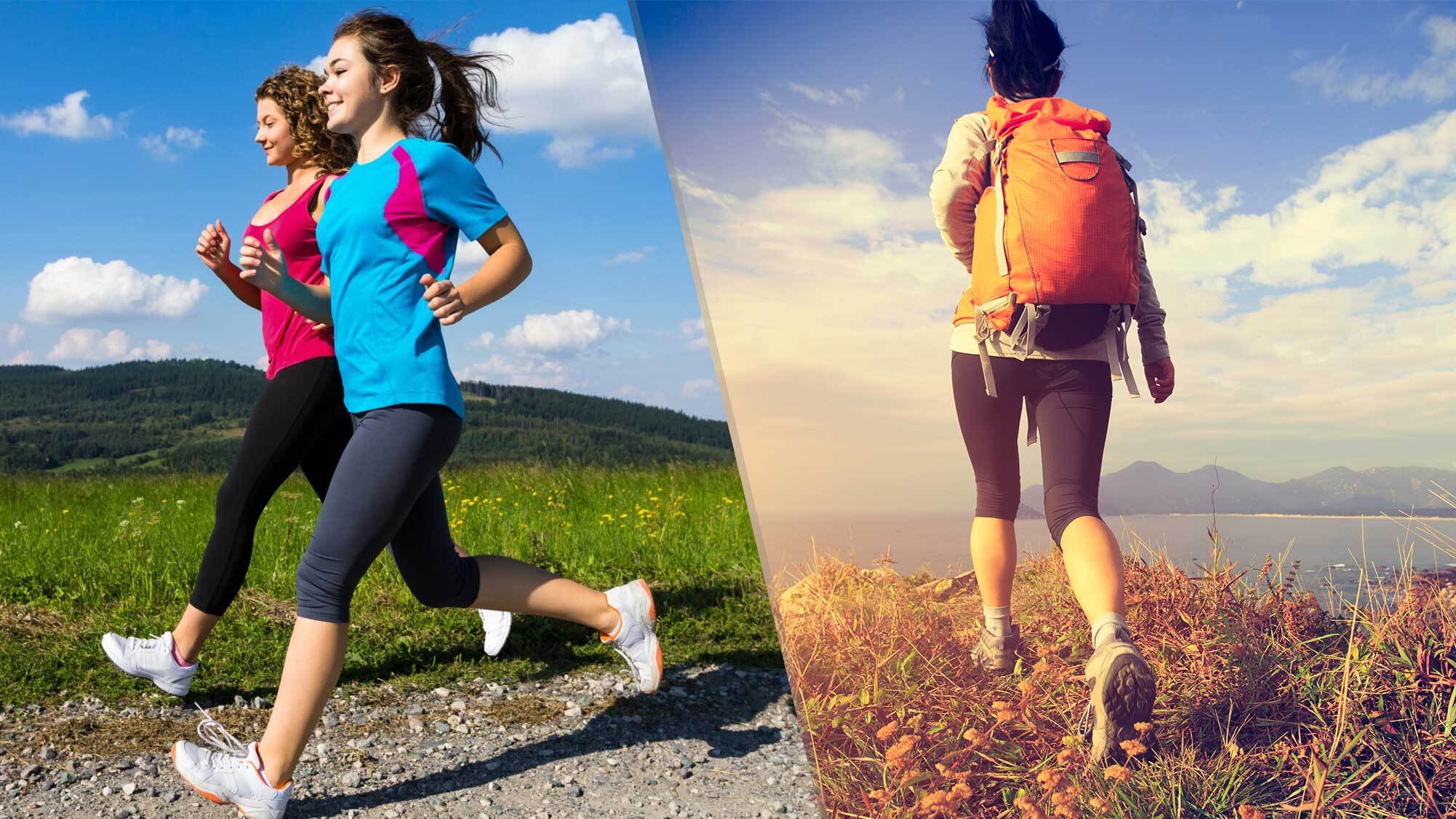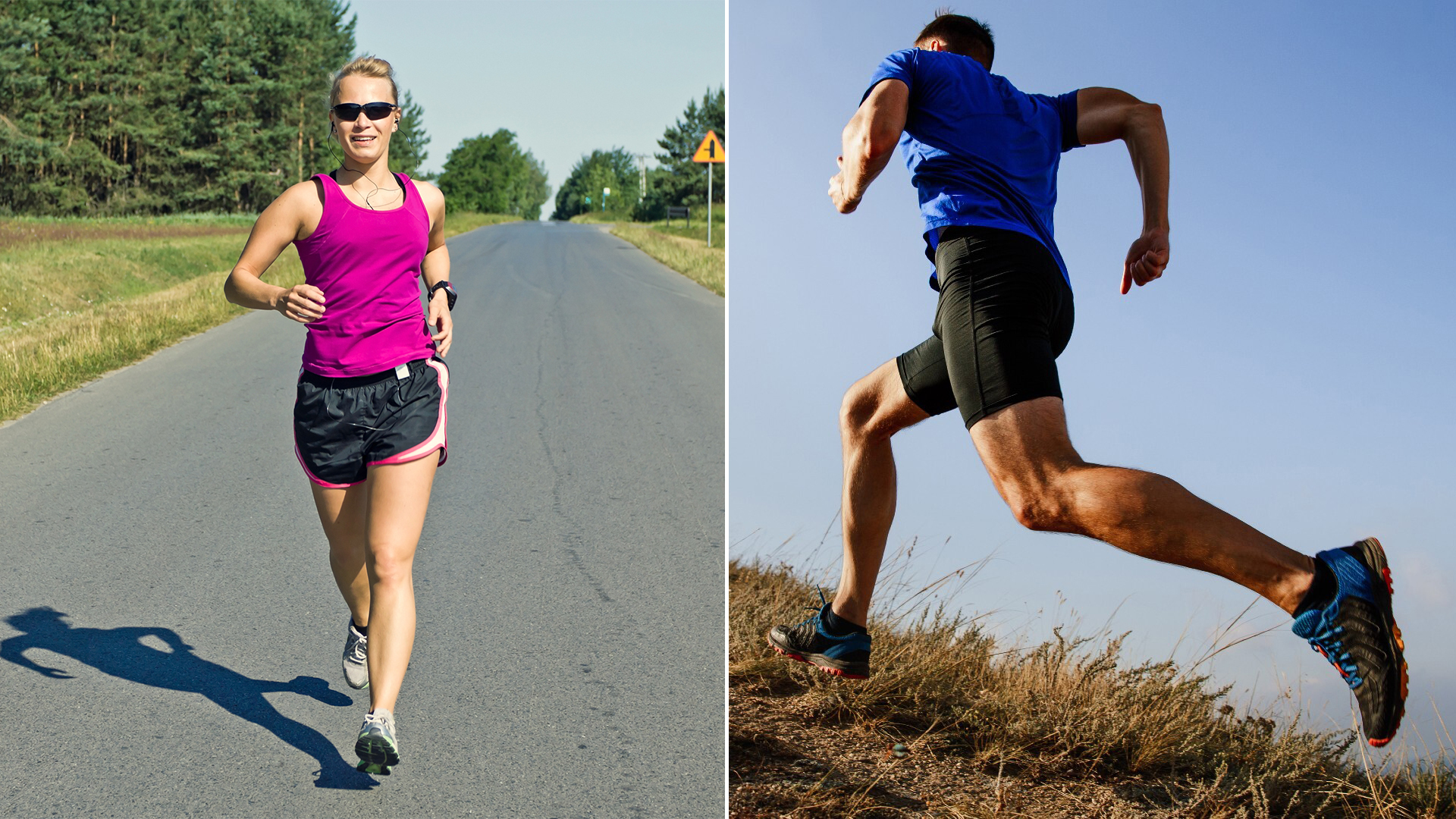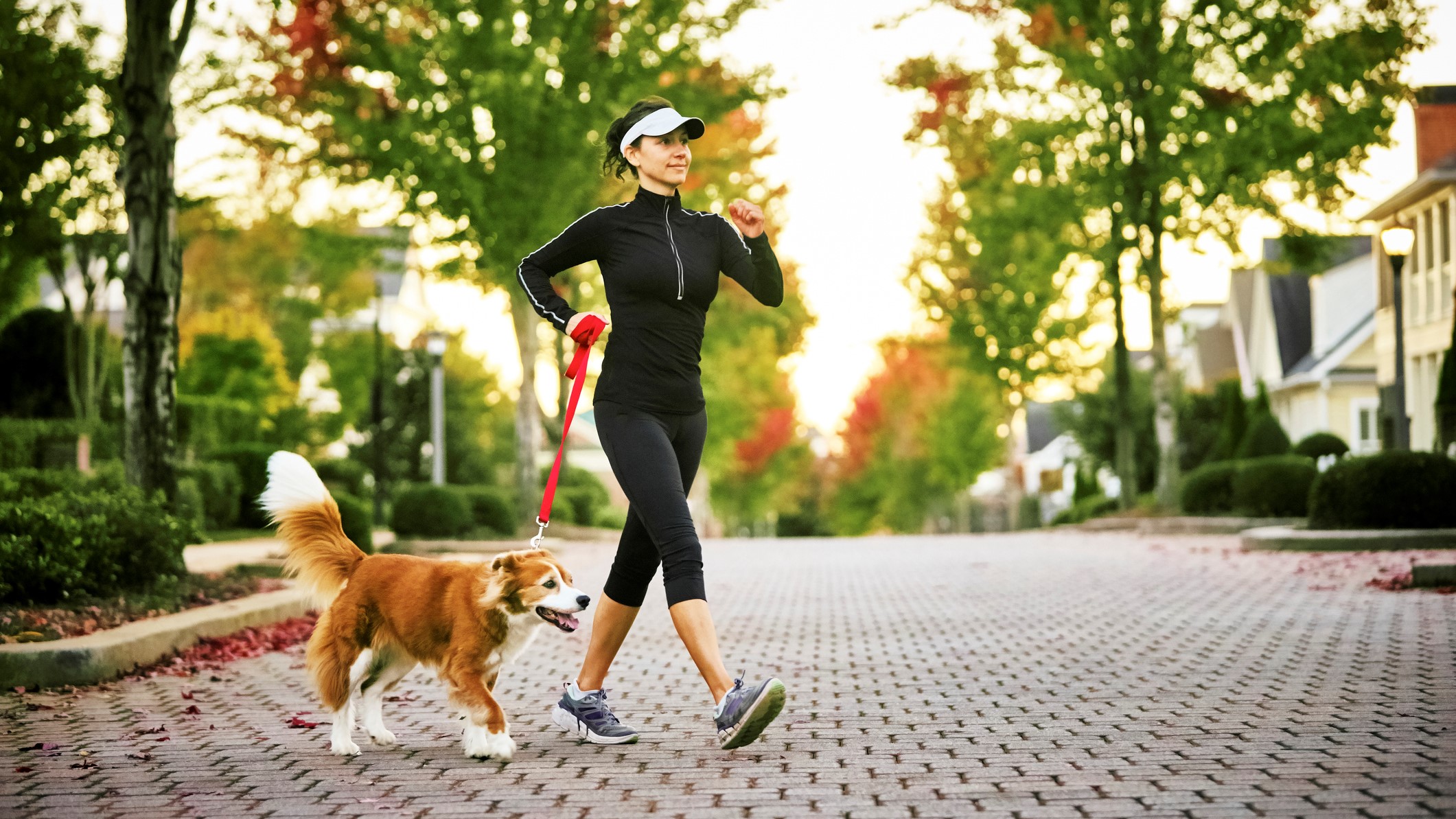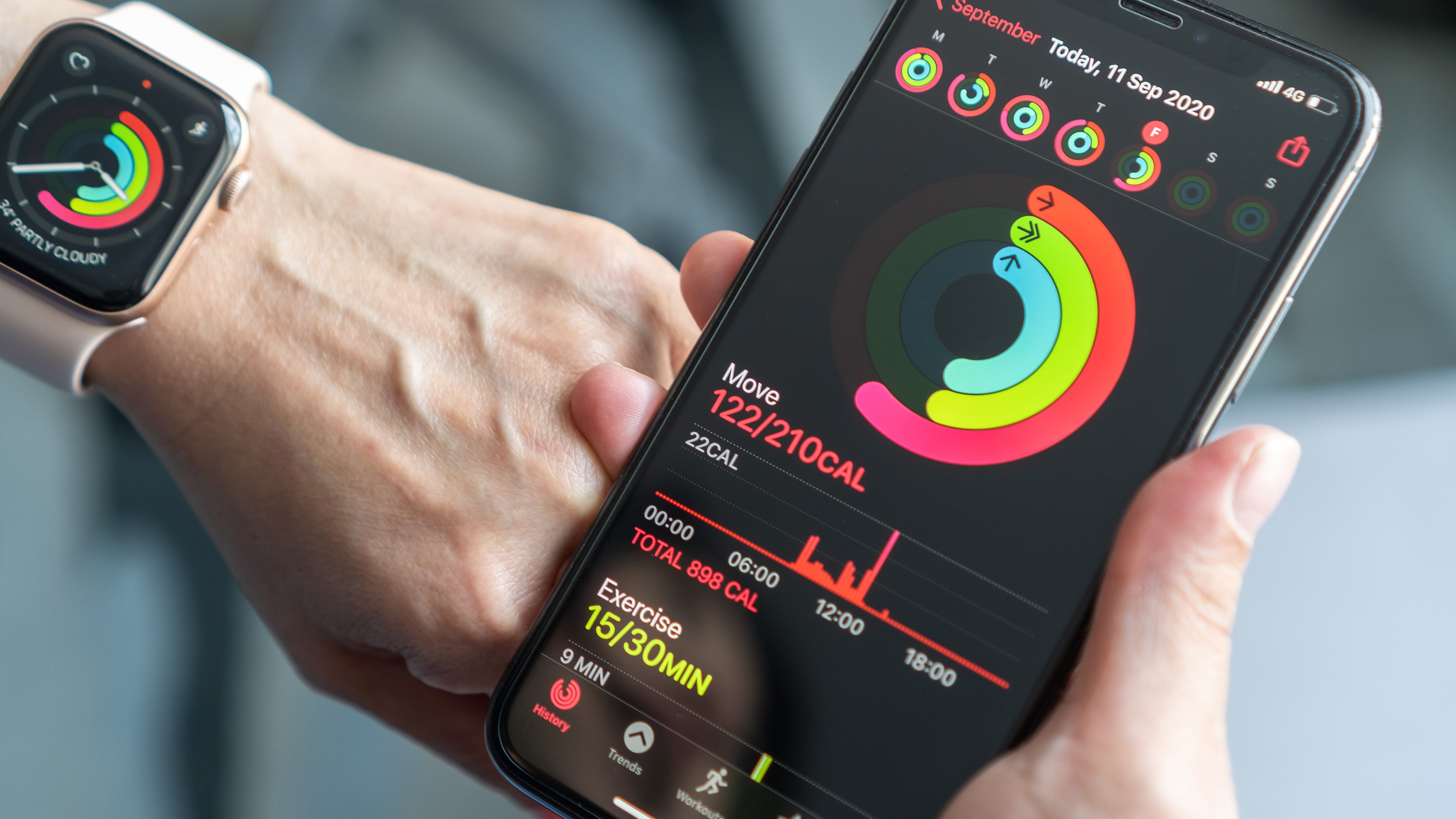
If you take to one of the best treadmills or the great outdoors for your cardio fix, would power walking or hiking burn more calories? We explored which you should consider adding to your exercise routine this year if your goal is to lose weight, burn calories and boost your metabolism. Here’s what we found.

Here on the Tom's Guide fitness desk, we're all about making 2024 your healthiest, and happiest year yet! To kick things off with a bang, we'll be bringing you a month of motivational content to help you Get Fit with Tom's Guide.
We’ve already crunched the numbers on various exercises like swimming, running, and uphill walking, putting sports head to head to see which is a knockout contender for tearing through calories.
That said, calorie burn differs from person to person, and you can never put an exact number on which workout burns what, so always take these numbers as a rough guide. Power walking and hiking are two popular exercise methods, so does one reign superior? Here’s what we know.
The best walking workouts are always sent viral by the likes of TikTok and Instagram, and recently, we’ve learned about walking methods like the Hot Girl Walk or Silent Walking (the “revolution” of walking without music or a podcast). But what can power walking or hiking do to your body?
Hiking vs power walking: Benefits
As discussed in the running vs power walking debate, power walking is a walk that meets a speed at the upper-end range, around 4-5.5 mph or 7-9km/h, and you should always maintain contact with the ground using one foot as you move. A hike typically means taking a long walk in the countryside, often in hilly and uneven terrain or mountains, for a length of time, following trails, or even scrambling, depending on your location. Hiking can be defined as more vigorous than a gentle stroll around the park, often wearing a backpack.
Both exercise forms offer a full-body workout, build cardiovascular fitness and strengthen your muscles, bones and joints. If you power walk or hike longer, you could also improve your stamina and endurance, burn calories and significantly ramp up your heart rate.

As a whole, walking is a low-impact form of resistance training, loading the bones and muscles using your bodyweight and terrain, which contributes toward the bone-building process of bone loading, which could protect you from age-related atrophy.
Arguably, you could hike for longer than you could power walk, adding intensity using difficult hiking terrains like inclines, declines, or rough roads (here’s the lowdown on uphill walking vs running), but power walking is more accessible for most people, and you can switch up the intensities using intervals and light weights.
Whichever option you choose, one study ran over 12 weeks found brisk walking helps exercisers lose abdominal fat, and other research has shown walking with intensity could improve mood and cognitive function.
Hiking vs power walking: Which burns more calories?
Buckle up because the numbers aren’t simple.
As we briefly mentioned above, calorie burn is highly individualized and depends on variables like intensity, workout length and genetics. Factors like age, sex, weight, hormones and fitness levels play a part, which makes calorie burn a fairly unreliable metric when using even one of the best fitness trackers.
That aside, the METS system is used by popular calorie calculators adopting the 2011 Compendium of Physical Activities and helps us measure against various sports and exercises using personal details and heart rate data, which we’ve used for this purpose — and as a guide only.

We set the hike distance at 5km using the metrics of a 32-year-old female weighing 120 lbs. Starting with a flat road at 0 elevations, we calculated that a 5km hike could burn 353kcal if wearing a day backpack weighing 108 lbs (published guides recommend carrying 10-20% of your body weight for day hikes). Without a pack, the number drops to 220kcal.
If we set the elevation gain (how high you climb in total) to an “easy” hike of 150 meters, according to some published general elevation guidelines, you could burn nearly 450kcal. A “moderate” climb could tear through around 700kcal at an elevation of 500 meters, and a “very difficult” climb of 1000 meters could cost you a whopping 1,131kcal.
Distance versus elevation also matters, as the shorter the distance, the more intense the elevation may feel, depending on your route and terrain. Also, remember that a round route (up and back down) will mean your elevation will be the sum of going uphill and downhill, whereas a route straight upward will be pure elevation gain. Going downhill for many people can be just as challenging on your leg muscles and joints, especially when it’s steep or uneven and unpredictable.
Power walking for 5km without an incline using the same metrics above could burn roughly 244kcal. Power walking at the top-end speed would cost you around 322kcal, and adding just a 1% gradient will top you up to 339kcal. Adding further inclines, light weights, or wearing a backpack could edge those numbers up slightly, but hiking takes the lead for the highest number of calories burned overall across 5km.
How to burn more calories
Uneven terrain
Hilly and uneven terrain is more physically taxing on your joints, muscles and energy demands, meaning the body must work harder, especially when navigating the ground at speed. Adding inclines and declines to your walking workouts could increase intensity.
Interval training
Moving between high and lower intensities and using HIIT could kickstart EPOC — Excess Post-Exercise Oxygen Consumption. After a particularly intense workout, your metabolism speeds up as the body consumes oxygen to return to balance, meaning you’ll continue burning calories once you rest.
During a power walk, you can turn over longer distances in a shorter time than a regular walk, but moderate intensity hikes (and above) can cover upward of 12km, meaning you can go for longer overall.
Add bodyweight exercises
You’re unlikely to burst into burpees, squats and push-ups during your hike, but adding bodyweight exercises to power walks is a great way to apply intervals and break up the intensity. Here are 7 bodyweight exercises you can do without weights.

Our verdict
Power walking and hiking are different exercises with plenty of benefits, but if you're looking to burn high numbers of calories, hiking gives you more potential to do so, depending on your effort.
While hiking nicks it for the highest potential calorie burn, you could reach higher numbers by increasing elevation gain, distance and how much you carry during both activities. But remember, people who weigh more tend to cut through more calories doing the same activity as someone who weighs less, so if you find yourself reaching a plateau during hiking or power walking activities, consider the ideas above or try holding a set of light dumbbells, a weighted vest, or backpack while you walk.







